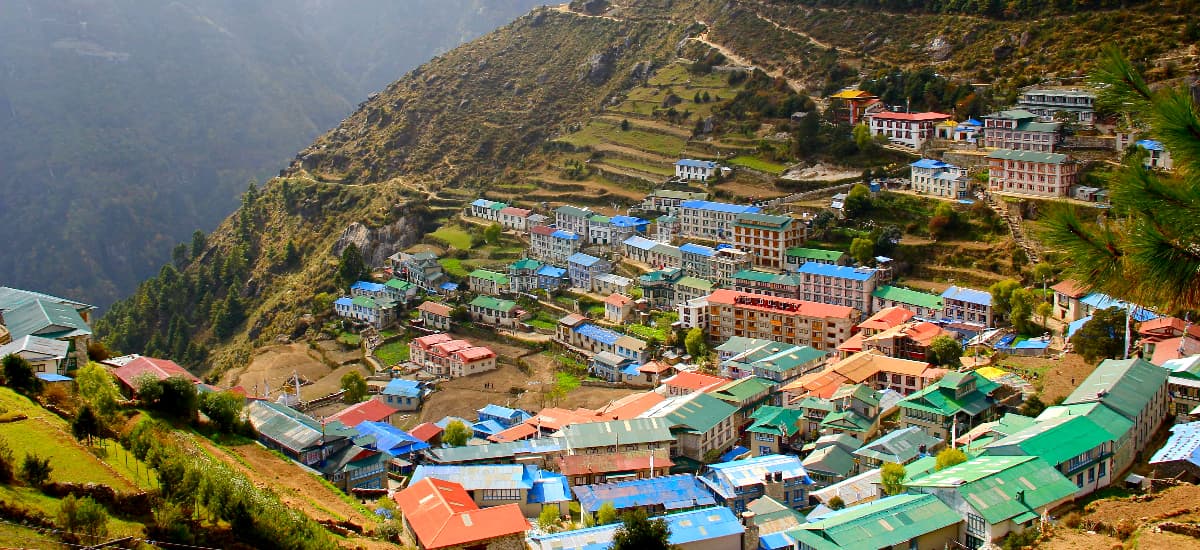Dreaming of trekking to Everest Base Camp but worried you don't have enough experience? You're not alone. Many first-time trekkers wonder if they can handle the challenge of this iconic Himalayan journey. While the Everest Base Camp trek demands respect, it's more accessible than you might think for motivated beginners with proper preparation.
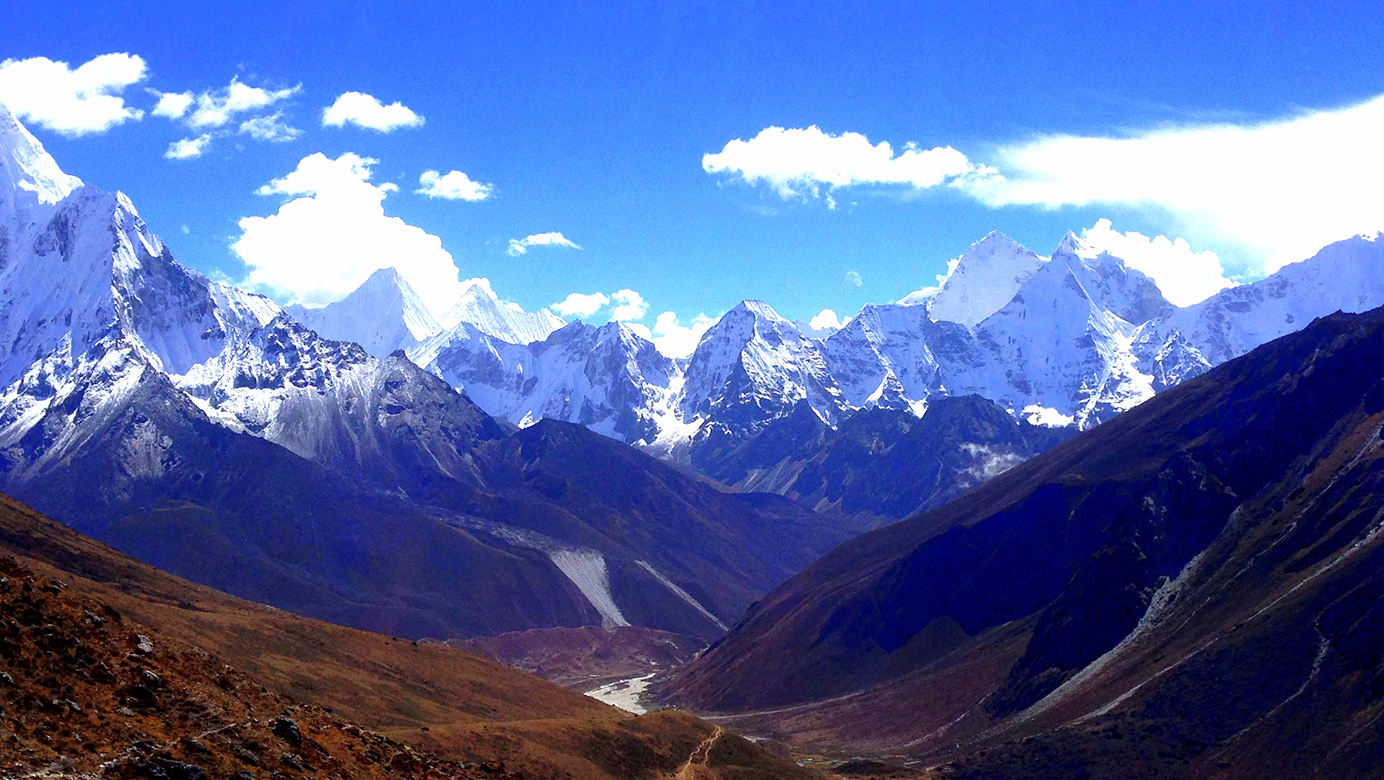
This guide is for adventure-seeking newcomers who want to tackle their first major trek in the Himalayas. We'll explore the realistic physical demands you'll face on the trail, break down the essential gear beginners need without overspending, and share modified itineraries that increase your chances of success. With Luxury Holidays Nepal's expertise, we'll help you determine if this bucket-list adventure aligns with your abilities and how to prepare if you decide to take the leap.
Understanding the Everest Base Camp Trek
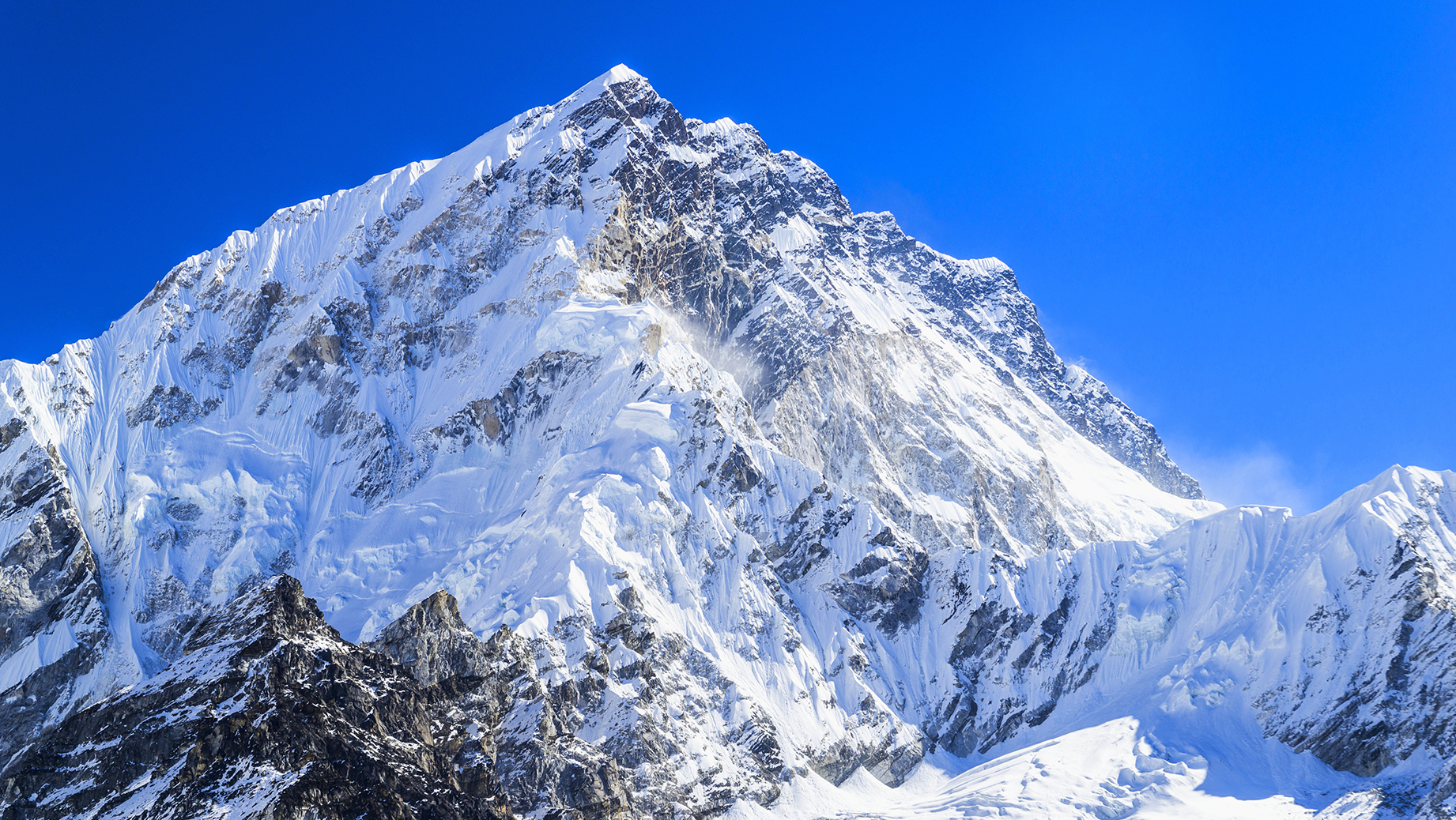
Overview of the trek route and key landmarks
The Everest Base Camp Trek isn't just famous—it's legendary. We start our journey with a thrilling flight to Lukla (2,860m), the gateway to the Everest region. From there, we follow the classic route through the stunning Khumbu Valley.
First, we hike to Phakding, then to the bustling market town of Namche Bazaar (3,440m)—the unofficial capital of the Sherpa region. Here's where many trekkers spend two nights acclimating while exploring local markets and enjoying their first views of Everest.
Continuing upward, we pass through beautiful villages like Tengboche (with its iconic monastery), Dingboche, and Lobuche. Along the way, we're treated to jaw-dropping views of peaks like Ama Dablam, Thamserku, and Lhotse.
The journey culminates at Everest Base Camp (5,364m) and Kala Patthar (5,545m), which offers the best views of Everest's summit. Trust us—standing there, surrounded by the highest mountains on earth, is an experience that stays with you forever.
Typical duration and distance
Most of our EBC treks take 12-14 days from start to finish. This includes flying in and out of Lukla and the all-important acclimatization days.
Distance-wise, we cover about 130km (80 miles) round trip. Daily hiking typically ranges from 4-8 hours, covering 10-15km per day. But remember, these aren't flat kilometers! The terrain constantly changes from moderate inclines to steep sections, with plenty of "Nepali flat" (a little up, a little down) in between.
Here's a quick breakdown of a typical 14-day itinerary:
|
Day |
Route |
Altitude |
Walking Time |
|
1 |
Fly to Lukla, trek to Phakding |
2,651m |
3-4 hrs |
|
2 |
Phakding to Namche Bazaar |
3,440m |
5-6 hrs |
|
3 |
Acclimatization day in Namche |
3,440m |
3-4 hrs |
|
4-7 |
Trek through various villages |
3,440-4,940m |
5-7 hrs daily |
|
8 |
Lobuche to EBC, back to Gorak Shep |
5,364m |
7-8 hrs |
|
9 |
Kala Patthar, then descend |
5,545m |
7-8 hrs |
|
10-13 |
Return journey |
Descending |
5-7 hrs daily |
|
14 |
Fly back to Kathmandu |
- |
- |
Altitude considerations and acclimatization needs
Altitude is the biggest challenge on the EBC trek—not the distance or terrain. We climb from Lukla at 2,860m to EBC at 5,364m. That's serious elevation gain!
To prevent altitude sickness, we include crucial acclimatization days in our itineraries. These aren't rest days—we still hike to higher elevations but return to sleep at lower altitudes. The golden rule we follow: "climb high, sleep low."
We typically schedule formal acclimatization days at Namche Bazaar and Dingboche. These give your body time to adjust to the thinning air. We've seen even the fittest trekkers struggle with altitude, so we never rush this process.
Some practical tips we share with all our trekkers:
-
Drink 3-4 liters of water daily
-
Avoid alcohol completely
-
Move slowly ("pole pole" as they say in Nepali)
-
Tell your guide immediately if you feel unwell
-
Consider preventative medications like Diamox (after consulting your doctor)
Seasonal variations and best time for beginners
The Everest region has distinct trekking seasons, and for beginners, timing matters. We generally recommend two prime windows:
Pre-monsoon (Spring: March-May):
Perfect for beginners! The temperatures are moderate, days are longer, and the rhododendrons and other alpine flowers put on a spectacular show. Clear mornings typically give way to afternoon clouds, but visibility remains good. May can get warmer and slightly hazier as the monsoon approaches.
Post-monsoon (Autumn: Late September-November):
This is peak season for good reason. The skies are crystal clear after the monsoon rains have washed away dust and pollution. The visibility is simply incredible, with sharp mountain views. Temperatures are comfortable during the day but get colder in November.
We usually steer beginners away from:
-
Winter (December-February): Too cold with heavy snowfall possible
-
Monsoon (June-early September): Rain, mud, leeches, and frequent flight cancellations
For absolute beginners wanting the easiest conditions, we recommend mid-October to early November. The weather is stable, trails are in good condition, and teahouses are well-prepared but not overcrowded.
Physical Requirements for First-Time Trekkers
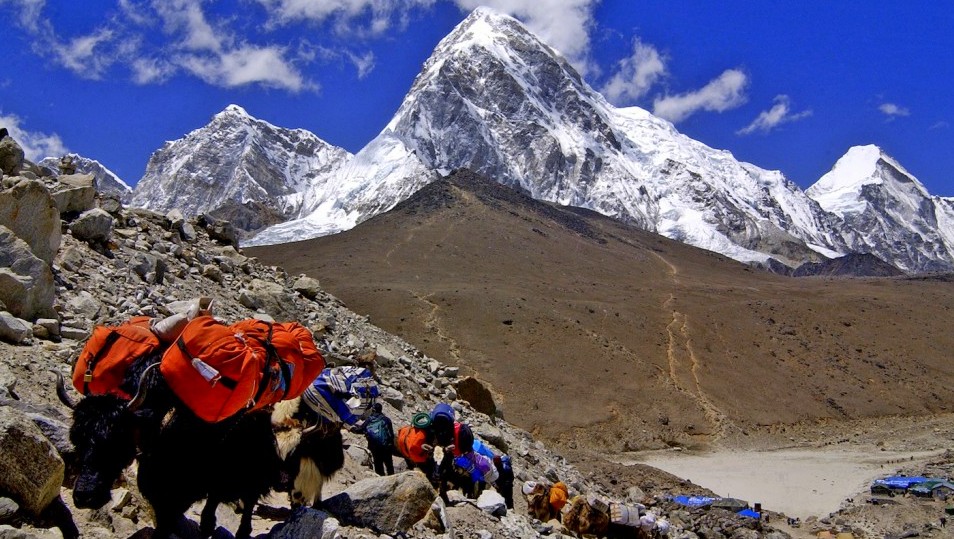
Fitness Level Expectations
The Everest Base Camp trek isn't a walk in the park, but it's not Mount Everest summit either. We recommend a moderate fitness level for first-timers. You don't need to be an Olympic athlete, but you should be comfortable walking 4-6 hours daily for multiple consecutive days. The trek involves climbing up to 5,545 meters (18,192 feet) at Kala Patthar, with daily elevation gains of 400-800 meters.
Training Recommendations Before the Trek
Start preparing at least 3-4 months before your trek. We've seen the best results when trekkers incorporate:
-
Regular cardio workouts (hiking, jogging, swimming) 3-4 times weekly
-
Strength training focusing on legs and core twice weekly
-
Practice hikes with a loaded backpack on weekends
-
Stair climbing to build climbing endurance
-
Gradually increasing workout duration to match daily trekking times
Age Considerations and Limitations
Age is just a number on the EBC trail! We've guided trekkers from 10 to 70+ years successfully. However, children under 10 may struggle with the altitude and duration. Older trekkers can absolutely complete the trek but might need extra acclimatization days and should consider hiring a porter to reduce physical strain.
Managing Pre-existing Health Conditions
Got asthma, diabetes, or high blood pressure? Don't cross EBC off your bucket list just yet. We've helped many trekkers with controlled conditions reach Base Camp safely. The key is:
-
Consulting your doctor for specific clearance
-
Bringing ample medication (plus extras)
-
Informing your guide about your condition
-
Considering travel insurance with high-altitude coverage
-
Planning a slower itinerary with extra acclimatization days
Realistic Assessment of Your Trekking Capabilities
Be honest with yourself. Can you walk for 5-6 hours daily for two weeks straight? Do stairs leave you winded? The EBC trek demands both physical endurance and mental fortitude.
Try these self-assessment activities:
-
Hike for 6-7 hours with elevation gain
-
Walk with a 5-8kg backpack for 4+ hours
-
Complete a multi-day hike at lower elevations
-
Test yourself at moderate altitudes if possible
Remember, it's your journey. Going slower or taking more rest days is perfectly acceptable. We can customize itineraries based on your fitness level.
Mental Preparation for Beginners
Psychological challenges you'll face
The mental game of Everest Base Camp trek? It's no joke. Many beginners underestimate this aspect completely. We've seen trekkers with peak physical fitness struggle simply because they weren't mentally prepared.
Boredom might sound trivial, but walking 6-7 hours daily for two weeks tests your patience. Those stunning Instagram photos? They capture moments, not the repetitive hiking reality.
Homesickness creeps in around day 4-5. The novelty wears off, and suddenly you're missing your bed, hot showers, and favorite foods. The isolation hits differently when you're physically exhausted.
Then there's the group dynamics. Spending intense time with strangers (or even friends) while everyone's tired and occasionally cranky can be challenging. We've witnessed close friendships tested on this journey.
Building mental resilience for long trekking days
Our best advice? Start with your "why." Having a powerful reason for attempting EBC keeps you going when your legs and lungs are screaming to stop.
Break each day into smaller milestones. Don't think about reaching Gorak Shep tomorrow - focus on making it to the next rest stop in 45 minutes.
Music works wonders too. A carefully curated playlist can distract your mind from physical discomfort and transport you mentally when the trail gets monotonous.
Meditation and breathing exercises aren't just for altitude adjustment - they're sanity savers. We recommend practicing these skills before your trip.
Managing altitude-related anxiety
Almost everyone worries about altitude sickness. Knowledge is your best defense here. We encourage understanding the symptoms: headaches, nausea, dizziness, and difficulty sleeping.
Remember, mild symptoms are normal and typically temporary. Our guides constantly monitor trekkers, and we build acclimatization days into every itinerary.
The buddy system works wonders for altitude anxiety. Having someone check in on you (and vice versa) provides tremendous peace of mind.
Always communicate honestly about how you're feeling. The macho "push through it" mentality has no place at high altitude. We've turned around many trekkers who tried hiding symptoms, potentially saving their lives.
Setting realistic expectations
The Everest Base Camp trek isn't a vacation - it's an adventure. Expect to be uncomfortable, challenged, and occasionally miserable. The magic happens just outside your comfort zone.
Understand that basic amenities diminish as elevation increases. Showers become luxury items. Internet access gets spotty. Food options narrow significantly.
Flexibility is crucial. Weather conditions might force itinerary changes. Your body might need an extra acclimatization day. We've seen trekkers spiral into frustration because reality didn't match their rigid expectations.
Finally, accept that not everyone reaches Base Camp. About 30% of trekkers turn back for various reasons. Having this perspective isn't negative - it's realistic and helps you make smart decisions on the mountain.
Essential Gear and Equipment for Novices
Clothing essentials for changing conditions
Trekking to Everest Base Camp means dealing with weather that can flip from sunny to snowy in minutes. We've seen trekkers struggle because they packed all wrong. Don't be that person!
Layer up - that's our golden rule. Start with moisture-wicking base layers (no cotton!), add insulating mid-layers like fleece jackets, and top it off with a waterproof, breathable outer shell. We always pack:
-
3-4 moisture-wicking t-shirts
-
2 thermal long-sleeve tops
-
2 fleece jackets (lightweight and heavyweight)
-
Down jacket (your best friend in the evenings)
-
Waterproof jacket and pants
-
3-4 pairs of hiking pants (at least one convertible)
-
4-5 pairs of wool socks
Don't forget your extremities! A warm hat, sun hat, gloves (thin liner pair plus insulated waterproof ones), and buff/neck gaiter are absolute must-haves.
Footwear requirements and break-in advice
Your feet make or break your trek - literally. We've rescued many trekkers with blisters the size of quarters.
Invest in quality waterproof hiking boots with ankle support. The rocky, uneven trails demand it. And please, break them in properly! We recommend wearing them for at least 2-3 months before your trek, including on longer hikes with elevation.
Pack trail runners as camp shoes - your feet will thank you after a long day. And don't skimp on socks! Bring wool or synthetic blends (again, no cotton) and change them daily.
Backpack considerations and weight management
Two bags for EBC: your daypack (30-35L) and your duffel (for porters, if you hire them).
In your daypack, carry only essentials:
-
Water (2 liters minimum)
-
Snacks
-
Camera
-
Extra layer
-
Rain cover
-
First aid kit
-
Sunscreen
For your main bag, remember that every ounce counts at altitude. We limit clients to 15kg (33lbs) maximum - and trust us, that's generous. Pack smart, not heavy.
Technology and communication devices
Staying connected on the trail keeps you safe and helps share your adventure.
We always bring:
-
Smartphone (airplane mode saves battery)
-
Portable charger/power bank (10,000mAh minimum)
-
Camera with extra batteries
-
Headlamp with spare batteries
-
Satellite communicator for emergencies
Cell service exists in many teahouses now, but it's spotty. Consider buying a local SIM card in Kathmandu. Most teahouses offer WiFi for a fee, but don't count on it working well above Namche Bazaar.
Remember to keep electronics warm at night - batteries die quickly in the cold!
Guided vs. Independent Trekking Options
Benefits of hiring experienced guides for beginners
The Everest Base Camp trek isn't your average weekend hike, especially if you're new to trekking. We've seen countless first-timers struggle with altitude, navigation, and basic survival skills when attempting to go solo. Experienced guides eliminate these headaches. They monitor your health, adjust the pace to match your fitness level, and know exactly when you need to rest or acclimatize.
Our guides have completed the EBC trek hundreds of times and can read the mountain like a book. They know which lodges offer the cleanest rooms, where to find the best meals, and how to avoid the crowds during peak season. For beginners, this local knowledge is priceless.
Luxury Holidays Nepal's beginner-friendly packages
We've crafted our beginner packages with extra acclimatization days built in—something first-timers often underestimate. Our standard EBC trek includes two strategic rest days at Namche Bazaar and Dingboche, giving your body crucial time to adapt to the thinning air.
Every package includes:
-
Pre-trek briefing with equipment checks
-
Porter service (carrying up to 15kg of your gear)
-
Smaller group sizes (maximum 8 trekkers)
-
Extra oxygen supplies for emergencies
-
Customizable itineraries based on your fitness level
Safety advantages of guided treks
The Himalayas don't care if you're a beginner or an expert—they can be dangerous for everyone. We've incorporated multiple safety nets into our guided treks. Our guides carry satellite phones and first-aid kits, and they're trained in wilderness first aid and high-altitude medicine.
Weather in the Khumbu region changes rapidly. Our team receives daily updates and can make quick decisions about route changes or rest days. We've evacuated trekkers when necessary and have established relationships with helicopter rescue services.
Cultural insights gained through local guides
Our Sherpa guides aren't just mountain experts—they're cultural ambassadors. They'll explain the significance of prayer flags fluttering in the wind, translate conversations with local villagers, and share stories about Sherpa history that you'd never find in guidebooks.
We stop at monasteries along the way, where our guides explain Buddhist practices and traditions. Many trekkers tell us these cultural exchanges become the unexpected highlight of their journey. The mountains are magnificent, but understanding the people who call them home adds a whole new dimension to your trek.
Accommodation and Comfort Levels
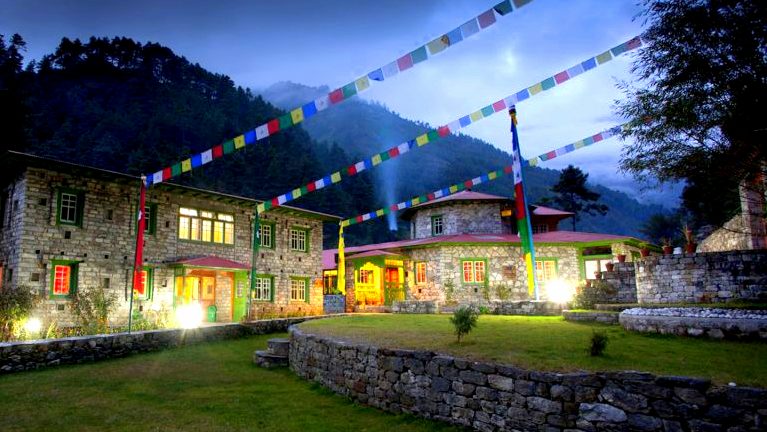
Tea house facilities along the route
When trekking to Everest Base Camp, we stay in tea houses - the backbone of Nepal's trekking infrastructure. These family-run lodges offer basic but comfortable accommodation after long hiking days. Most tea houses feature a central dining area with a stove that becomes the social hub each evening, where trekkers from around the world share stories and warmth.
The rooms are typically simple: twin beds with mattresses, pillows, and blankets. We always recommend bringing your own sleeping bag for extra warmth and hygiene. As you ascend higher, facilities become more basic - that's just the reality of remote mountain locations.
Luxury options for comfort-seeking beginners
Not ready for the full rustic experience? We've got you covered! Several premium lodges have emerged along the popular sections of the trail, offering amenities that can make beginners feel more at ease. The Everest Summit Lodges and Yeti Mountain Homes provide heated rooms, comfortable beds with duvets, and western-style bathrooms.
For those wanting maximum comfort, we can arrange helicopter shuttles between certain points, letting you experience the highlights while skipping some challenging sections. Some luxury lodges even offer massage services - perfect for tired muscles after a day on the trail!
Bathroom and shower realities
Let's talk bathrooms - often the biggest adjustment for first-time trekkers. In standard tea houses, toilets are typically Asian-style squat toilets shared among guests. Higher up, these facilities get more primitive. Toilet paper isn't provided, so we always pack plenty.
Hot showers are available in most lodges up to Namche Bazaar (3,440m), though they come with an extra charge (usually $3-5). Above Namche, hot water becomes scarcer, more expensive, or unavailable. Many of our guests opt for wet wipes for daily freshening up and save shower days for lower elevations.
Sleeping arrangements and comfort tips
We've learned a few tricks over our years guiding beginners through the Himalayas. First, bring earplugs! Tea house walls are thin, and snoring trekkers can disrupt your much-needed rest. A small travel pillow can upgrade comfort dramatically, and a sleeping bag liner adds both warmth and cleanliness.
As you climb higher, nighttime temperatures drop significantly. We recommend adding layers inside your sleeping bag rather than relying solely on thicker bags. Hot water bottles are golden - many tea houses will fill your bottle with hot water (for a small fee) to keep at your feet all night.
Power outlets for charging devices are available in most tea houses, though sometimes only in common areas, and often require payment. Consider bringing a portable power bank to ensure your camera captures those magical mountain moments.
Beginners' Health and Safety Considerations
Altitude sickness prevention strategies
Truth bomb: Altitude sickness can ruin your Everest Base Camp trek if you're not careful. We've seen it happen too many times. The good news? It's largely preventable.
We always tell our trekkers to follow these simple rules:
-
Climb high, sleep low
-
Take your time (seriously, rushing is your enemy)
-
Stay hydrated (aim for 4-5 liters daily)
-
Skip the alcohol and cigarettes
-
Consider Diamox if your doctor approves
The magic prevention formula is actually just patience. We build extra acclimatization days into our beginner treks because your body needs time to adjust to the thinning air.
Common medical issues and remedies
Besides altitude sickness, beginners often face these challenges:
-
Stomach troubles: We recommend packing probiotics, activated charcoal, and anti-diarrhea meds. Don't be shy about bringing these!
-
Sunburn: The sun at altitude is fierce. We've seen painful blisters on unprepared trekkers. Pack SPF 50+ and reapply constantly.
-
Blisters: Break in those boots before your trip! We bring moleskin and blister bandages on every trek.
-
Common cold: The temperature swings can weaken your immune system. Vitamin C tablets and throat lozenges are must-haves.
Evacuation procedures and insurance requirements
We don't mess around with this one. Every trekker MUST have comprehensive travel insurance that covers:
-
High-altitude trekking (above 5,500m)
-
Helicopter evacuation (minimum $5,000 coverage)
-
Medical treatment in Nepal
In emergencies, we coordinate helicopter evacuations from most points along the trail. Our guides carry satellite phones and emergency oxygen for serious situations.
Remember this: insurance that doesn't specifically mention "high altitude trekking" probably won't cover you. Double-check your policy!
Water and food safety practices
Water safety is non-negotiable on the trek. We follow these rules religiously:
-
Only drink treated water (purification tablets, SteriPEN, or boiled)
-
Skip ice in drinks
-
Avoid uncooked vegetables at higher altitudes
-
Eat freshly prepared hot meals
Most stomach issues stem from contaminated water. We provide boiled water at tea houses, but bringing your own purification method gives you independence.
For food, we stick to well-cooked, hot meals. The classic "Dal Bhat" (rice and lentils) is our go-to recommendation—it's nutritious, safe, and all-you-can-eat!
Acclimatization schedule designed for beginners
Our beginner-friendly itinerary includes these critical acclimatization days:
-
Day 3: Rest day in Namche Bazaar (3,440m)
-
Day 6: Rest day in Dingboche (4,410m)
During these days, we don't just sit around. We take short "acclimatization hikes" where you climb higher during the day but return to sleep at the lower elevation. This classic "climb high, sleep low" strategy helps your body adjust much more effectively.
For beginners, we recommend a minimum 14-day itinerary (including travel days). Rushing increases your risk of altitude problems, and honestly, why hurry through one of the world's most beautiful treks?
Modified Itineraries for First-Time Trekkers
Extended itineraries with extra acclimatization days
We've seen firsthand how taking it slow can make all the difference for beginners tackling Everest Base Camp. Our extended itineraries typically add 2-3 extra days compared to standard treks, with dedicated rest days at critical elevation points like Namche Bazaar (3,440m) and Dingboche (4,410m).
These additional days aren't just about resting – they're perfect opportunities to explore nearby villages, visit local monasteries, or take short hikes to viewpoints while your body adjusts to the thin air. Many of our first-time trekkers tell us these "breathing days" transformed their experience from a struggle to a pleasure.
Alternative routes with gentler elevation gains
The traditional EBC route can be brutal for beginners, so we've crafted alternative paths that follow more gradual ascents. The Gokyo Lakes route, for instance, offers a more gradual climb with breathtaking scenery that rivals the classic trail.
Another option we recommend is approaching via Phaplu or Jiri instead of flying to Lukla. Yes, it adds 3-5 days to the journey, but the gentler elevation gain gives your lungs and legs time to build strength before hitting the steeper sections.
Shortened trek options to Namche Bazaar or similar points
Not everyone needs to reach Base Camp to experience the magic of the Everest region. We offer shortened treks that go only as far as Namche Bazaar or Tengboche Monastery, which still provide spectacular mountain views without the physical demands of the full trek.
These shortened options typically take 7-10 days round-trip, compared to the standard 14+ days for the full EBC trek. You'll still experience authentic Sherpa culture, breathtaking mountain vistas, and the thrill of Himalayan trekking – just with less strain on your body.
Helicopter return options for one-way trekkers
One of our most popular options for beginners is the "trek up, fly down" approach. This allows you to experience the gradual acclimatization and cultural immersion of the upward journey, without the knee-pounding descent.
After reaching your goal – whether that's Base Camp itself or a lower milestone like Tengboche – we arrange a helicopter pickup that whisks you back to Lukla or directly to Kathmandu in less than an hour. Beyond saving time and knees, this aerial return offers spectacular bird's-eye views of the route you conquered on foot.
Success Stories and Testimonials
Real experiences from beginner trekkers
We've seen countless beginners reach Everest Base Camp with smiles on their faces. Take Sarah from Australia, who had never trekked above 3,000 feet before. "I was terrified at first," she told us, "but by day three, I found my rhythm. The guides from Luxury Holidays Nepal never rushed me, and that made all the difference."
Then there's Miguel from Spain who completed the trek at 61 years old. "My friends thought I was crazy, but the team structured rest days perfectly. I made it all the way without feeling overwhelmed."
Challenges faced and overcome by novices
First-time trekkers consistently mention altitude as their biggest hurdle. James from Canada shared, "I got headaches on day four, but the guides immediately adjusted our pace and made sure I drank enough water. By morning, I felt ready to continue."
Many beginners struggle with the mental aspect too. Emily from the UK admitted, "There were moments I wanted to quit, especially during the final push to Kala Patthar. The encouragement from our guides and fellow trekkers pulled me through those tough spots."
Tips from first-time trekkers who completed the journey
"Train before you arrive, but don't panic if you're not an athlete," advises Tom from the US. "I just walked stairs for two months before the trek and managed fine."
Lisa from Germany suggests, "Pack less than you think you need. My biggest mistake was overpacking and feeling burdened by my backpack."
Another gem comes from Raji from India: "Take the diamox only if you need it. I followed the guides' advice about acclimatization and never needed medication."
Luxury Holidays Nepal's track record with beginners
We're proud that almost all of our first-time trekkers successfully reach Everest Base Camp. Our approach centers on personalized pacing and daily health checks. When Jason from Australia showed signs of altitude sickness, our guides immediately implemented our safety protocol, allowing him a rest day before continuing successfully.
Our beginner-focused itineraries include strategic acclimatization days that have proven crucial for first-timers. As Samantha from Canada noted, "The extra day in Namche Bazaar made all the difference—I saw others from different groups struggling while we felt strong and ready."
The Everest Base Camp Trek is indeed achievable for beginners who approach it with proper preparation and realistic expectations. While physically demanding, success hinges on adequate fitness training, mental readiness, appropriate gear, and a well-planned itinerary that allows for acclimatization. First-time trekkers benefit significantly from choosing guided expeditions with experienced professionals who understand the unique challenges of the Himalayan terrain and can provide essential safety support.
We at Luxury Holidays Nepal have witnessed countless first-time trekkers realize their dream of reaching Everest Base Camp. With our modified itineraries designed specifically for beginners, comprehensive pre-trek guidance, and dedicated support throughout your journey, your aspirations of standing in the shadow of the world's highest peak can become reality. Take that first step toward an adventure of a lifetime—contact us to discuss how we can tailor your Everest experience to match your experience level while ensuring both safety and unforgettable memories.
If you need any further information, please contact us by email: at [email protected], Phone: at +977- 985 100 5129 (WhatsApp)

